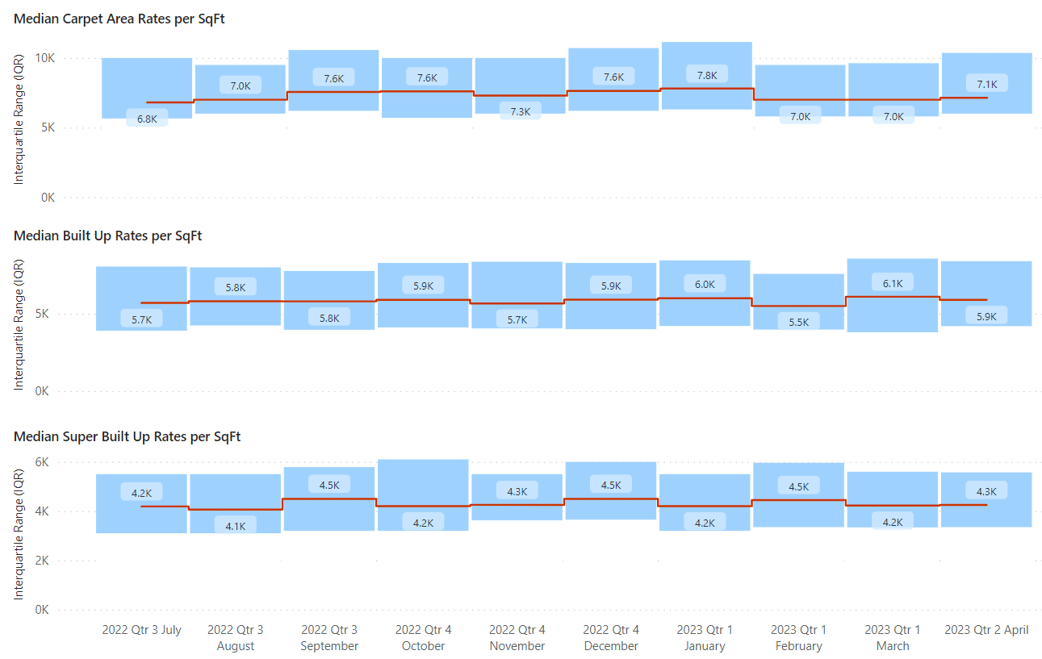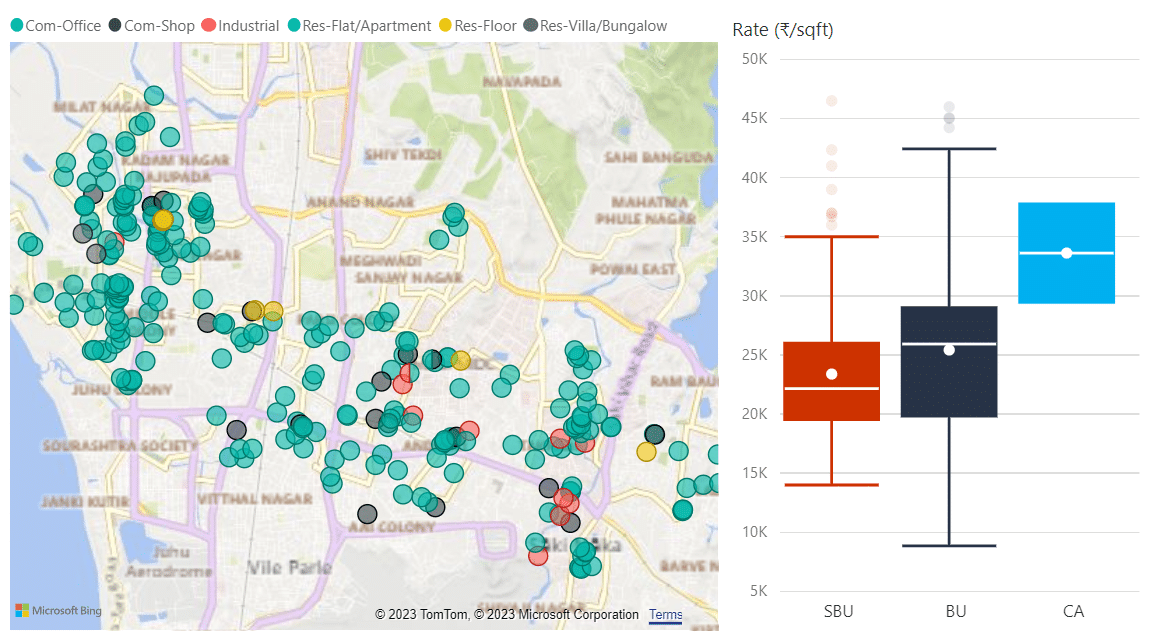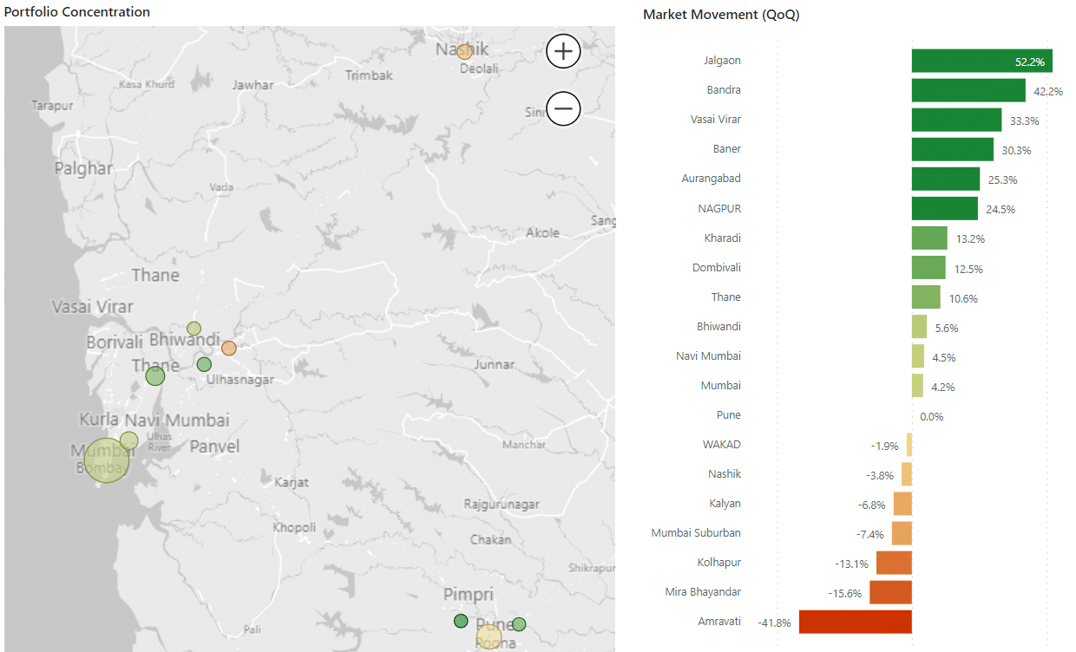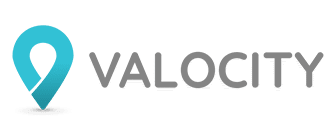In my role as Chief Executive Officer of Valocity India, I have been fortunate enough to interact with leaders from the industry and understand their digitisation journey, the opportunities they are exploring, the challenges they face. This blog summaries some of my key learnings/observations
- How digitisation and data is transforming mortgage lending,
- The current gaps/opportunities in the industry,
- Factors that can facilitate acceleration of the transformation.
How digitisation and data is transforming mortgage lending
Digitisation and data have significantly transformed the mortgage lending industry, streamlining processes, enhancing efficiency, and improving customer experience. Examples of impact include:
Online Applications: Traditional paper-based mortgage applications have been replaced by online application systems. Borrowers can now complete and submit their applications electronically, reducing paperwork, manual data entry and human error.
Automated Underwriting: Digitisation has enabled the development of automated underwriting systems. These systems use algorithms and data analysis to evaluate factors such as borrower information, credit scores, income, GST filings allowing for faster and more accurate loan decision-making.
Electronic Document Management: Physical documents, such as pay stubs, tax returns, and bank statements, can now be digitised and stored electronically. This eliminates the need for manual paperwork, reduces the risk of document loss, and allows for easier document retrieval during the loan process.
Credit Scoring and Risk Assessment: Lenders now have access to vast amounts of data, including credit scores, payment history, and financial profiles. Advanced analytics and machine learning algorithms can accurately analyse this data to assess borrower risk and determine appropriate interest rates and loan terms.
Real-time Verification: Digitisation has enabled verification of borrower information in real-time. Through APIs and data integrations, lenders can swiftly access employment verification, bank account data, and property information, improving the speed and accuracy of the loan process.
Online Collaboration and Communication: Mortgage lenders and borrowers can now interact online, improving communication and collaboration. Borrowers can securely upload documents, track the progress of their applications, and receive updates electronically, reducing the need for physical meetings, email trails and phone calls.
Robotic Process Automation (RPA): Repetitive and rule-based tasks, such as data entry, document verification, and loan processing, can be automated using RPA. This technology reduces human errors, speeds up processing times, and frees up staff to focus on more complex and valuable tasks.
Predictive Analytics: By analysing historical data, lenders can use predictive analytics to identify potential default risks, assess property valuations, and predict market trends. This helps lenders make more informed decisions and mitigate risks. Valocity is leveraging predicative analytics to benchmark and track property values in micro markets.

Figure 1: Valocity Property Value Rates p/sqft can be used to track market movement, predict inflections, and assess potential risks for new lending.
Enhanced Compliance and Risk Management: Digitisation allows for better tracking and monitoring of compliance requirements. Lenders can use data analytics to identify and address potential compliance issues, reducing the risk of penalties and improving overall risk management. Valocity’s workflow is designed to maintain audit trails, this helps in better audit and compliance process and faster resolution of Non-Performing Loans
Customer Experience Improvements: Digitisation has made the mortgage application and approval process convenient and user-friendly. Borrowers can compare rates, complete applications online, and easily track their progress. This improved customer experience helps attract and retain customers.
Overall, digitisation and data have revolutionised mortgage lending by automating processes, improving decision-making, and enhancing the customer experience, resulting in a more efficient and streamlined mortgage lending process and industry.
The current gaps/opportunities
While digitisation and data have made significantly transformed mortgage lending in India, there are still some processes that lack full digitisation and data utilisation. Here are a few examples:
Property Valuation: Property valuation in India often relies heavily on manual assessments from valuers or appraisers. While there are efforts to introduce automated valuation models, the widespread adoption of digitised property valuation methods is still limited. Incorporating data-driven approaches and leveraging advanced algorithms can improve the accuracy and efficiency of property valuation. Platforms like Valocity have transformed property valuation process in other parts of the world, currently working with over 10 lenders in India to deliver transformation to the valuation process. Valocity has built interactive tools which helps lenders to benchmark the Value of a property and eliminate any errors in the valuation process.

Figure 2: Valocity’s Surrounding Market Analysis gives visibility of localised markets, allowing for data-driven ending decisions in micro and macro markets alike.
Document Verification: Despite advancements in electronic document management, the verification of various documents required for mortgage lending, such as land records, ownership documents, and property-related clearances, often involves manual processes. Implementing digitised systems for document verification, including integration with government databases and digital signatures, can streamline this process and reduce the risk of fraud.
Credit Decisioning: While credit scoring models are applied in mortgage lending, the data ecosystem for credit decisioning in India can be further leveraged. Incorporating alternative data sources, such as utility bill payments, rent history, and digital financial transaction data, can enhance credit assessment and expand access to credit for underserved segments of the population.
Regulatory Compliance: Compliance requirements in mortgage lending involve multiple stakeholders and often require manual interventions. Streamlining regulatory compliance through digitised systems, such as automated reporting, data analytics for risk monitoring, and real-time compliance checks, can help lenders ensure adherence to regulatory guidelines in a more efficient manner. Valocity’s digital workflow and human centered design automates regulatory compliance reporting and simplifies adherence to regulatory requirements and audit processes through digitisation
Customer Onboarding and KYC: While there has been progress in digitising the customer onboarding process, Know Your Customer (KYC) requirements still involve physical documentation and in-person verification. Implementing fully digital and remote KYC solutions, such as video-based identity verification and integration with Aadhaar-based eKYC, will enhance the customer experience and expedite the onboarding process.
Interoperability and Data Sharing: Mortgage lending involves multiple parties, including lenders, borrowers, credit bureaus, and government agencies. Establishing standardised data formats, data sharing protocols, and interoperable systems across these entities would improve data accuracy, reduce duplication, and enhance transparency throughout the mortgage lending ecosystem. Valocity employs an ecosystem approach, onboarding multiple stakeholders on one platform making it easier for all lenders to leverage data related to property valuations and have one source of truth.
Loan Servicing and Collections: While some lenders have digitised loan servicing and collections to some extent, there is still room for improvement. Automating payment processing, integrating digital channels for customer service and self-service options, and leveraging data analytics to proactively manage collections can enhance efficiency and the borrower experience in loan servicing.
Efforts are underway to address these gaps in digitisation and data utilisation in the Indian mortgage lending sector. As the adoption of technology and regulatory frameworks evolve, we can expect further advancements in these areas to enhance the efficiency, transparency, and accessibility of mortgage lending in India.
Factors that can facilitate acceleration of the transformation
Several factors impact the digitisation of lending processes in India. These factors can either facilitate or hinder the adoption of digital technologies in the lending industry. Here are some key influencers:
Regulatory Environment: The regulatory framework plays a crucial role in shaping the digitisation of lending processes. Regulatory policies that encourage digital transformation, data sharing, and e-signatures can drive the adoption of digital technologies. Clear guidelines on data privacy, security, and electronic transactions help build trust and confidence in digital lending platforms. Government and the Regulator can play a very important role in accelerating digital adoption – without regulatory intervention it was not possible to have a Credit bureau in India. Similar initiatives can be undertaken to create a property bureau with authentic data on property valuations, similar to Aadhaar property identification, which will help in tracking ownership and all other property related attributes (taxes, compliance etc.)
Infrastructure and Connectivity: Access to reliable internet connectivity and robust digital infrastructure is essential for the widespread adoption of digital lending. Uneven internet penetration, especially in rural areas, and inconsistent connectivity can be barriers to digitisation. Improved connectivity, along with affordable and accessible digital infrastructure, is crucial for enabling digital lending across the country.
Technology Readiness: The readiness of lenders, borrowers, and other stakeholders to embrace digital technologies impacts the pace of digitisation. The availability of user-friendly digital platforms, mobile applications, and online services as well as education and awareness programs to enhance digital literacy and familiarity with digital tools can promote the adoption of digital lending processes.
Data Availability and Quality: Access to reliable and comprehensive data is vital for digitszed lending processes. Availability of accurate borrower data, credit history, financial information, and property data from reliable sources enables efficient credit decisioning, risk assessment, and loan underwriting. Building robust data infrastructure, including credit bureaus and data-sharing mechanisms, fosters digitisation in lending. This is the biggest challenge and Valocity’s approach is to solve the basics – our digital workflow ensures quality and accuracy of data. Once the data is available Valocity leverages proprietary tools to create property indexes, price benchmarks and other collateral and risk management tools.

Figure 3: Valocity tracks market performance of specific localities, against concentration of lending assets, to better assess business exposure across any state or city.
Customer Trust and Acceptance: Building trust in digital lending platforms is crucial for customer acceptance. Concerns related to data privacy, security, and fraud prevention can hinder adoption. Lenders need to prioritise data protection measures, transparent information sharing, and strong customer authentication to build trust and encourage borrowers to embrace digital lending processes.
Collaboration and Industry Standards: Collaboration among lenders, technology providers, and regulators is essential for driving digitisation in lending processes. Developing industry-wide standards, interoperable systems, and data-sharing protocols can facilitate seamless integration and improve efficiency across the lending ecosystem. Collaborative efforts can also help address regulatory challenges and create a conducive environment for digitisation. Valocity has collaborated with regulators in other geographies to support and create standardization and collaboration. In India Valocity is following a similar approach, a common platform across all valuers helps in creating standardised processes and data capture, which can then be aggregated at an industry level.
Risk Management and Compliance: The digitisation of lending processes brings new risk management and compliance challenges. Lenders need to ensure data security, privacy, and regulatory compliance while leveraging digital technologies. Robust risk management frameworks, fraud detection systems, and cybersecurity measures are necessary to mitigate risks associated with digitisation.
Cost and Return on Investment: The cost of implementing digital lending processes and the expected return on investment are significant factors influencing digitisation. Lenders need to evaluate the costs of technology infrastructure, software development, employee training, and ongoing maintenance. Demonstrating the potential benefits, such as increased efficiency, reduced operational costs, and improved customer experience, can justify the investment. Most lenders (or should this be lenders) still classify digitisation as a cost as opposed to an investment. In addition evaluating the return on investment, the hidden cost of knowledge, capital and time required for the build and ongoing technology maintenance cost are taken into consideration, making it difficult to evaluate the total opportunity cost.
By addressing these factors and leveraging opportunities, such as supportive regulations, enhanced digital infrastructure, and collaborative initiatives, India can further accelerate the digitisation of lending processes, leading to greater financial inclusion, efficiency, access to credit and accelerating the path to a Digital India.

Author: Sovan Mandal
Chief Executive Officer – Valocity India
Sovan brings over 20 years’ experience in financial services in India and abroad particularily in growing and scaling teams, and innovating products and services across Retail Finance, Credit Cards, and the Mortgage industries to deliver enduring customer success.

